based on E.H. Nickel & M.C. Nichols (2009), H. Strunz & E.H. Nickel (2001),
revised by Thomas Witzke (2022)
1. ELEMENTS
(Metals and intermetallic alloys, Metalloids and Nonmetals, Hydrides, Borides, Carbides, Silicides, Nitrides, Phosphides, and Oxy-Titanides)
1.C: Metalloids and Nonmetals
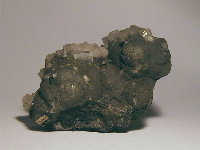 | 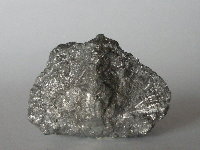 | 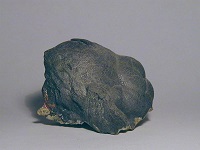 | 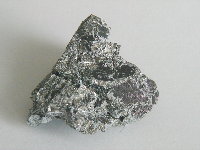 |
Chaoite is regarded as a carbyne. Two forms of carbyne chains are known, α-carbyne (polyyne, with alternating single and triple bonds), and β-carbyne (polycumulene, only with double bonds). In carbyne crystals, the chains are arranged in a hexagonal array parallel to c, ideally with only Van der Waals forces between the chains. Obtained synthetic and natural material cannot be considered as a pure linear carbon modification (with only sp1 hybridization of electron orbitals) because of cross-linking between the chains (with linking carbon atoms in sp2 hybridized state as in graphite and fullerene or sp3 as in diamond), distortion of the chains or impurity atoms. According to Chuan et al. (2003) [Chuan, X.-Y., Zheng, Z. and Chen, J. (2003) Flakes of natural carbyne in a diamond mine. Carbon 41, 1877-1880], chaoite might be stabilized by the intercalation of Si or Fe, located in galleries between layers of carbyne, where straight or kinked carbon chains were held together by Van der Waals forces.
Graphite polytypes: Graphite-2H, hex., P63/mmc, common polytype; Graphite-3R, trig., R3m, rare.
Fullerite, C60, cub., was also found in nature, but is not described as a mineral yet.
Lonsdaleite is structurally related to diamond and exists probably only as small domains in shocked diamond.
Tartarolite is an ultrahigh-pressure phase, corresponding to synthetic "BC8-carbon". In natural Tartarolite, only 0.725 % of the carbon positions are occupied.
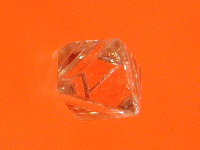 | 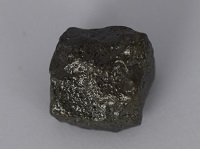 | 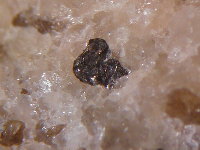 | 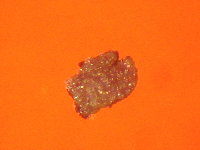 |
Clinosulphur: originally described as Sulphur-β, renamed. Stable above 95.6°C.
Lingbaoite can be regarded as an Ag-stabilized Te with distorted cubic structure, closely related to the α-Polonium structure. It is therefore classified here as an element mineral (alloy-like) rather than as a silver telluride.
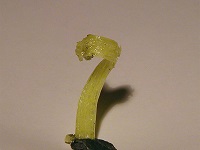 | 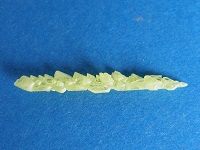 | 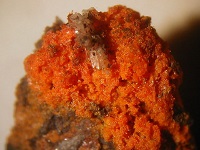 | 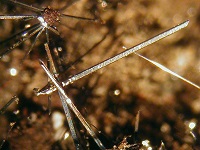 |
Deltanitrogen, δ-N, was found as a solid, high-pressure phase as inclusion in diamond.
G = Grandfathered minerals: original description preceded the establishment of the CNMNC in 1959, and generally regarded as a valid species
A or IMA No. = Minerals approved by the CNMNC
Rd = Redefinition of the mineral approved by the CNMNC
Rn = Renamed with approval by the CNMNC
Q = Questionable mineral
Classification principles:
Subdivision of the Elements subclass "1.C: Metalloids and Nonmetals" is based first mainly on chemical principles from more metallic elements (as continuation to subclass 1.A) and metalloids to non-metallic elements. The classification into Metals (1.A) and Metalloids etc. (1.C) is not fully consistent. Bismuth and Antimony are regarded as metals, but placed in 1.CA. for historical reasons and to avoid a splitting of the Arsenic group 1.CA.005. The further subdivision in 1.A, 1.B and 1.C is based mainly on structural principles.
Further classification:
|
1.CA. Arsenic group elements: Arsenic group; other As polytypes; Paradocrasite 1.CB. Carbon-Silicon family: Carbon minerals, with increasing hybridization (linear, planar and 3-dimensional arrangement of the atoms); Silicon 1.CC. Sulphur-Selenium family: Sulphur minerals; Selenium and Tellurium; Tellurium derivatives 1.CD. Nitrogen: only one mineral. |
To distinguish from classical Strunz numbering, on hierarchical "group" level, a numbering with 3 digits is used, like "1.CA.005. Arsenic group", instead of 2 digits (like "1.CA.05.") in the Strunz system.
© Thomas Witzke (2023)
